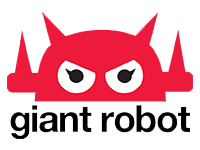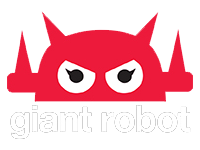Giant Robot Store and GR2 News
The once-in-a-lifetime event of visiting America’s premier building, The White House can’t be compared to much of anything. I haven’t been everywhere, but I have been to the Empire States Building, the original WTC and the Statue of Liberty. I’ve also seen Mount Rushmore, Grand Canyon and Devil’s Tower. There are many beautiful places, both natural and man-made that are “more” historical and maybe untethered to society while being greatly symbolic. Yet, The White House is arguably the greatest “Thing” in America.
In the late 80′s, the big news of crack cocaine was purchased where? Shockingly, it was across the street from The White House. It was allegedly set up, but the effect, thanks to the bust location made headlines. It’s the place that might have the highest standard to meet. If anything goes wrong near or in The White House, it makes news.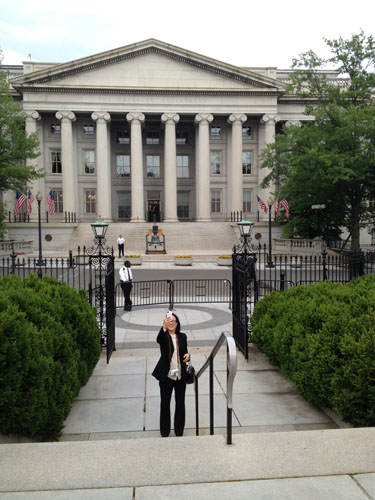
That’s the view from the back door. That’s often-camera-shy Cate taking a pic.
Since 9/11, The White House is perhaps one of the most protected buildings in the world. For the people who hate Americans, it’s at the top of the list of places to topple. It’s toppling efforts are depicted in two current high budgeted apocalyptic pictures, Olympus has Fallen and White House Down, and it’s dramatized on TV’s House of Cards and The West Wing. Of course there’s an underground bunker that’s laden with iris scanners and tunnels. There’s a giant kitchen where chef (Cristeta Pasia Comerford), a Philippine-American who could beat anyone on Top Chef and Iron Chef and couldn’t fathom Kitchen Nightmares. She’s been there since 1995 and is the first “Executive Chef”. There’s a bowling alley, which is bad ass on it’s own and a movie theater that can play anything in any format. Imagine the Secret Service watching White House Down in The White House. It has probably already happened. The windows panes are antique, wavy hand-blown glass. The hallway we enter from post security check points (plural) has a huge boulder sized sculpture of Abraham Lincoln’s head. Even the back door is picture worthy. For some reason, a photo of walking in is important. Imagine that The White House is so bad ass of a “Thing” that’s it’s actually the original home-office. If you work at home, you’ve been doing it “White House Style” and didn’t even know it. It’s also highly probable that the insane myths of The White House may not meet the grandeur of its reality. Yes, it’s that bad-ass of a “Thing.”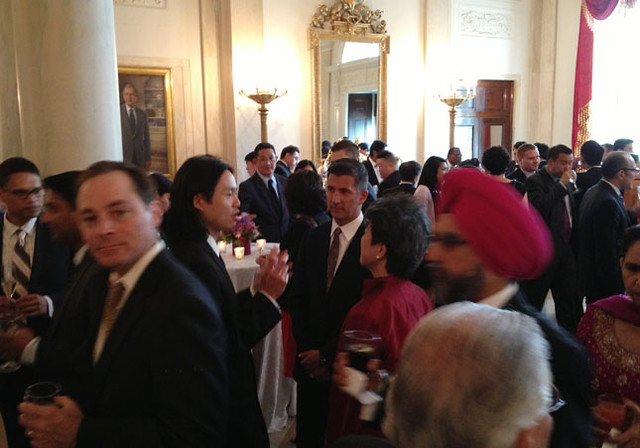
The vast wide entrance room
Getting to wander around with friends and peers who are part of the White House’s Asian American Pacific Islander Heritage Month, room by room will never get old. AngryAsianMan Phil, VC Shinae, JANM Greg Kimura, Wing Luke Beth Takekawa, CAAM Stephen Gong, ACV John Woo, filmmaker Tad Nakamura, and many others, some of who I know and most who I don’t overwhelmed themselves by merely standing and looking around. Our familial pasts are different, yet we’re a common story of being fairly recent immigrants, just a generation or few removed that makes this experience unique and also strange. Getting to visit The White House is a result of circumstances. It’s a combination of our doings, our parents doings and perhaps even their parents doings. It’s also the result of a different administration that’s keeping an eye out for the underdog. Most of “us” are products or are the product of some type of injustice or discrimination, some just by looking different but others by the same government that invited us on this day. My own father was incarcerated at a Japanese American Concentration Camp 70 years ago. Of my visit, he thought it was insane and cool. After all, he’s an American and my visit to this place means something to him. For the few hours of wandering and taking in history, along with President Obama’s remarks just tens of feet away, and then the performances, it’s all about the moment – free of anything, anywhere.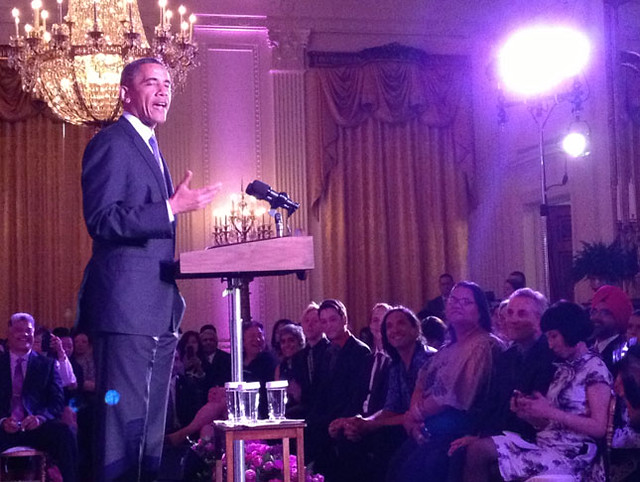
Close photo of The President, done with an iPhone
The Los Angeles Asian Pacific Film Festival just ended and now I’m wondering what to do. Sounds like a good time to share some pictures. Of course, my focus was on my pals from The Working Man enjoying a moment in the spotlight.
I spotted my good friends Tadashi Suzuki (the star) and Wing Ko (co-director) before the shorts program began, and had a good time hanging out with them, saying hi to friends, and looking forward to their artful skate video’s hometown premiere.
Greetings from Chicago
This is Tim Hugh and his dog Helga in his kitchen in Chicago. Tim has run the only Asian American Indie Film Fest (i.e. no “imports”) for 12 of the 17 years that it’s been in existence. In this picture, he’s a one man bandleader- running it solo, something I can relate to as a solo musician. I’m in town to promote my film “Daylight Savings” which premiered at SXSW this year, and will be the opening night film this year. Joining me at the screening will be Michael Aki who plays my cousin in the film. I met Mike at this very festival in 2010 when he was showing his films Sunsets that he directed with Eric Nakamura, and his Film Noir tribute “Strangers”
I asked Tim a bunch of questions:
Goh: Why is this festival important?
Tim: It’s one of the only festivals that shows only Asian American films; produced, directed and/or about the Asian American experience. In the midwest more so than the coastal states, you’re constantly asked that stupid question “Where are you from?”… so it’s important to help define what being Asian and American is.
I’m a fourth generation Chinese American. In the midwest, it’s usually under the assumption that you’re just “Asian”… and not “Asian American.” When I see Causasian people I don’t ask them “are you from Poland? are you European?” I just see them for who they are, not what they look like.
Goh: How did you get involved in the festival?
Tim: I was just a fan of the band Seam, and Sooyoung Park, Ben Kim and Billy Shin started the festival in 1995 after they released the Ear of the Dragon CD, which was the first Asian American Rock Compliation. I’d always go and watch everything I could. I’d never seen films like this before; Asian American characters that spoke like me; the actors weren’t forced to speak with a bad accent. I could relate to these images and characters that I was seeing at this festival.
I became obsessed and would watch everything I could, whether it be a feature, documentary, or shorts program. I just wanted to see as much as I could, because I knew I’d never get a chance to see these movies again. Plus, being able to meet the directors and hear them speak about their films was one of the coolest things for me. I remember hanging out with Justin Lin, back when he was just a shorts director.
They noticed me being there year after year, and began to recognize me. Eventually, they would ask me to do little things like hand out program booklets, take tickets, watch the table, and take pictures during the Q&A’s. Basically, I became a volunteer. I remember standing there back in the day giving out Giant Robot magazines!
